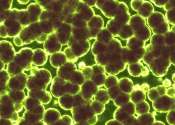Is the COVID-19 virus pathogenic because it depletes specific host microRNAs?
Why is the COVID-19 virus deadly, while many other coronaviruses are fairly innocuous and just cause colds?
Aug 14, 2020
0
94
Why is the COVID-19 virus deadly, while many other coronaviruses are fairly innocuous and just cause colds?
Aug 14, 2020
0
94

Batten disease is a family of 13 rare, genetically distinct conditions. Collectively, they are the most prevalent cause of neurodegenerative disease in children, affecting 1 in 12,500 live births in the U.S. One of the Batten ...
Jun 30, 2020
0
19

Exposing teeth to excessive fluoride alters calcium signaling, mitochondrial function, and gene expression in the cells forming tooth enamel—a novel explanation for how dental fluorosis, a condition caused by overexposure ...
Feb 18, 2020
0
1839

Synapses allow neurons to communicate with one another. In the synapse, one neuron emits chemical messengers called neurotransmitters, and an adjacent neuron receives them using tiny structures called receptors. A specific ...
Nov 20, 2019
0
555

In response to seizures, the endoplasmic reticulum (ER), a network of flattened tubes in the cell that packages and transports proteins, triggers a stress response that reduces brain activity and seizure severity. The new ...
Sep 26, 2019
0
8

Researchers have described a new mechanism which induces the self-killing of cancer cells by perturbing ion homeostasis. A research team from the KAIST Department of Biochemical Engineering has developed helical polypeptide ...
Aug 28, 2019
0
3

To successfully set off disease, rotavirus, a virus that causes severe diarrhea and vomiting in children around the world, must invade cells of the gastrointestinal track and trigger a surge of calcium inside the cells. How ...
Jul 25, 2019
0
3

A new study by a chemistry researcher at the University of Arkansas has revealed the critical molecular mechanisms of Ipomoeassin F, a highly toxic natural product that inhibits the growth of many tumor cell lines. The finding ...
Jun 6, 2019
0
3

Our bodies are continuously concocting specific antibodies to thwart invaders like a virus or even pollen, and scientists have new information about how the essential production gets fired up and keeps up.
Mar 13, 2019
0
125

When a person takes a puff on a cigarette, nicotine floods into the brain, latching onto receptors on the surface of neurons and producing feelings of happiness. But nicotine does not simply stay on the surface of cells—the ...
Feb 7, 2019
0
7
